We arrived to Vienna, with its sweeping boulevards, the birthplace of breakthroughs of music and psychology. The city encapsulates the opulence of the Hapsburg Monarchy and their ornate Baroque palaces. The day began with a guided bus tour of the Ringstrasse, their ring road filled with beautiful buildings. They are detailed with statues, making Vienna one of the most beautiful cities in Europe.
The St. Francis of Assisi Cathedral is out of a fairy tale book, with spires and rotundas.
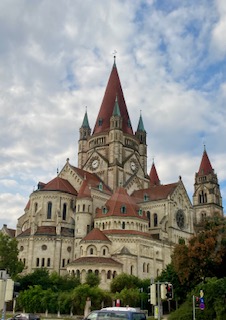
We then started our walking tour of the city, walking first to the Imperial Palace, the winter residence of the Hapsburgs, while their summer residence was the Schonbrunn Palace near Salzburg. Since 1946, it is has been the official residence and workplace of the President of Austria.
Built in the 13th century, with additions over the years, the Hofburg Palace has details that make it unique from every perspective. The green dome is new (relatively), while the black dome is original. It is a huge building, difficult to take in one shot, but you can see the amazing details and gold accents on the building.
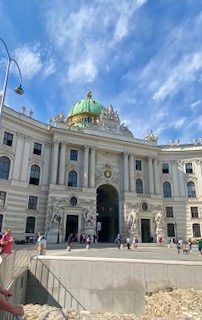
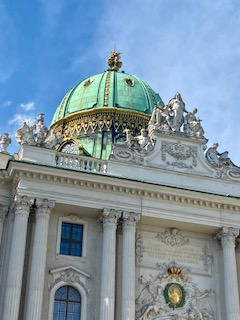
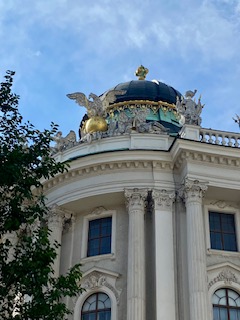
As you walk around the town, you see narrow residential streets. It is obvious that the buildings were built hundreds of years ago, before car traffic, but there was a specific, and very smart, reason they were located like this. The buildings can not accommodate air conditioning and with the hot temperatures in the summer, so having buildings opposite each other meant that they didn’t get a lot of sun exposure. It was “natural” air conditioning!
By the way, the coffee shop on the right side of the street is one of the oldest in Vienna. We enjoyed a nice tea and coffee respite, as many people must have over the centuries. Across the street is the Steiff store, famous for beautiful stuffed animals, especially bears.
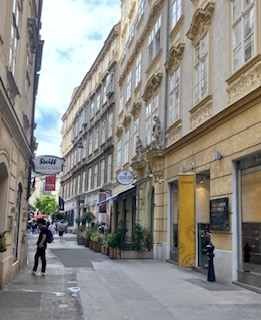
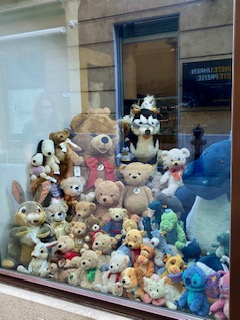
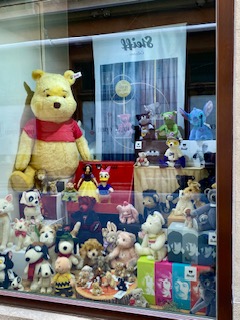
As we walked around the corner to the square, we saw the St. Stephen’s Cathedral, with its amazing roof tiles and giant spires. Juxtaposed across from a modern hotel, the church is iconic in its detail, compared to the rather bland glass and metal structures nearby. Built in 1147, the inside is just as imposing, with ceilings that must be five or six stories. There are 256 stairs from top to bottom! No, we didn’t even try.
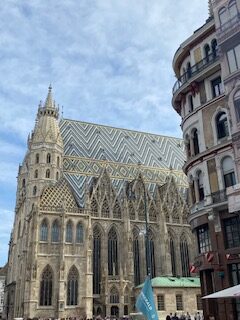
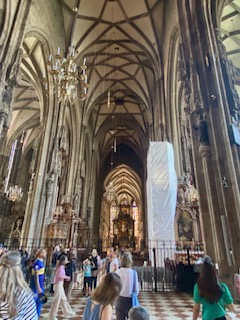
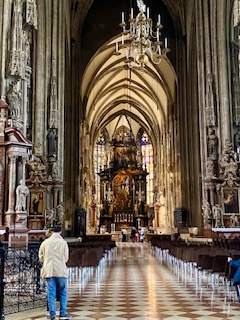
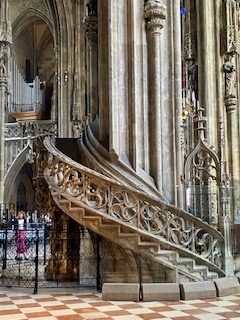
We continued our walk through Vienna and passed by the famous Spanish Riding School, featuring the Lipizzan stalions. They are incredible horses, who train for nine years before being allowed to perform. We just missed seeing the horses go from the exhibition arena to their stables, but once inside, they were treated like the celebrities they are. Their heritage came from the occupation of Spain by the Moors in the early 8th century, ending in 1492. The Moorish influence resulted in the cross-breeding of Arabic and Iberian horses, combining elegance and strength. The Archduke, Karl Franz in Austria decided to establish a stud farm in the late 16th century to breed his own Spanish horses. Interestingly, they are born dark and gradually lighten with age, not achieving the white coat for which they are known until 6-10 years of age.
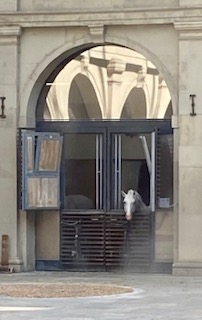
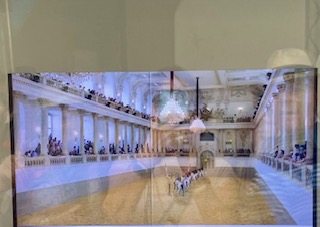
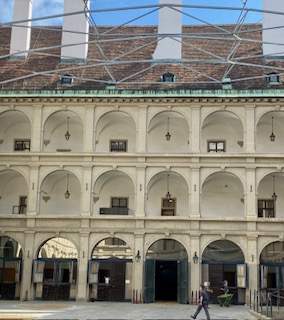
Time to return to the ship for a wonderful dinner, then off to our next stop up the Danube.
